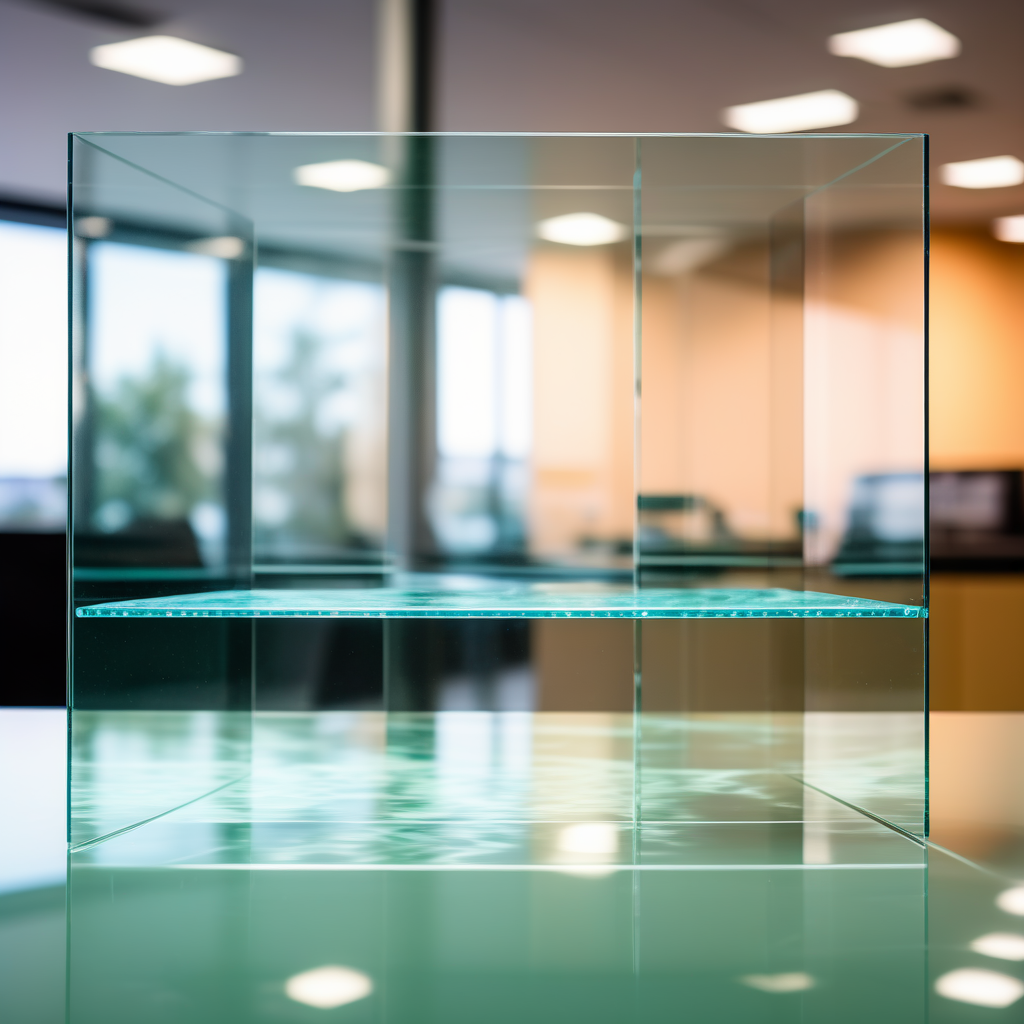You are probably thinking of giving your home, business or office rooms a makeover and adding some amazing decorative lighting effects. fantastic! It's a great idea with which you can get that definitive touch of character and personality. Nothing better than opting for the most outstanding and impressive technique that tempered glass has to offer.
You will find a product of high quality and excellent safety to realize your project. It is processed by thermal treatments that allow it to increase its resistance compared to simple glass. Therefore, by opting for this product you will enjoy an aesthetic, safe and long-lasting environment.
A remarkable feature of tempered glass that will fascinate you even more is that it does not absorb heat, which helps maintain a stable temperature in your rooms. This is because it has a higher resistance to thermal stress than ordinary glass. They can withstand temperature differences of up to 250 °C, so it will be the best investment you can make today.
Undoubtedly, tempered glass is a trendy, highly useful and durable alternative offered by Giovani Glass. With its decorative and varied application, you will have the opportunity to add beauty and elegance to any of your spaces; where you can also provide them with light in the most outstanding and spectacular way.
Advantages of tempered glass
- It is versatile, that is to say, it can be used to place it in spaces such as windows, doors, screens, furniture, balconies, stairs, room dividers...;
- It provides luminosity, spaciousness, comfort and safety, which makes it the best option;
- Contributes to maintaining a pleasant interior temperature, since the material does not heat up, even if it is in direct contact with the sun;
- It offers a surprising effect in terms of spaciousness, generating the sensation of open environments with greater comfort;
- It increases the value of the structure attracting potential buyers;
- The texture of tempered glass can be adapted according to the needs of each project;
- Its hardness, resistance and hygiene are some of its great allies;
- Thermo-insulating films can be applied or colored to become a decorative element.
It is a safety glass; which turns out to be the best alternative when it comes to transformation, modernity and durability. For all the benefits that adorn it, it is the most suitable for any type of room. In our company, you will know in depth and certify all the qualities attributed to this captivating and wonderful material.
New York tempered glass specifications
One of its main qualities is its resistance. Its hardness makes it resistant to strong impacts and, in case of breakage, it breaks in small particles joined in a rounded shape for greater safety.
As for the standard thickness of a tempered glass panel, it is equivalent to 10 mm and 12 mm thick (3/8 inch to ½ inch) in tall buildings. And in case of using them as a curtain wall, the composite thickness will be 1", with two 6 mm (1/4) panels and half an inch of separation between them. With all this in mind, it is still the best choice for construction projects.
Of course, the physical strength properties of tempered glass make it the most suitable for a variety of applications, such as oven doors, door glazing, computer screens, shower enclosures, glass walls, terrace cladding, etc. Therefore, its application is due to the characteristics that make it very suitable and versatile.
In terms of hygiene, tempered glass can be cleaned with any common cleaning product. In addition, due to its compact and completely smooth structure, there are no small gaps in which it can store microbes. Therefore, this material, with all the qualities and advantages it offers, remains the most suitable for your plans.
Tempered glass manufacturers in New York
At Giovani Glass, we strive to please the tastes of our users, at the time of need. We are a responsible, experienced company with a long history, which is equipped with a highly professional staff to offer advice and tirelessly help to meet the suggestions proposed.
Our products are reliable and of high quality, manufactured with the most sophisticated and impact resistant glass, guaranteeing durability for many years. It is a very versatile material with which you can achieve different functions inside and outside of any room, it will be wonderful to acquire it! Do not hesitate any longer and opt for this luxurious material.
Contact us, clarify any doubts, ask for your free quote if you wish and enjoy excellent products and services at unbeatable prices.

